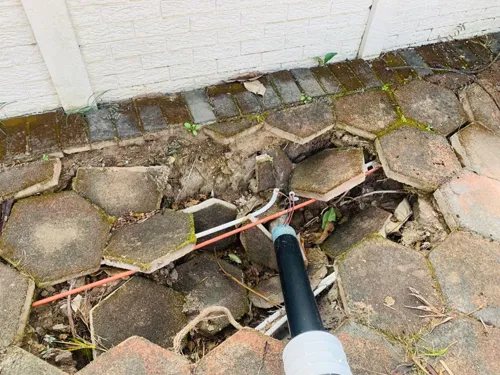
Speedy response by Procompare was unprecedented and fantastic. Service providers where contacted hideously but didn't respond as well as Procompare did. I salute Procompare for prompt response towards assisting me, they helped me get the perfect provider at the end!
I would like to commend the contractor for paving. Very fast response, hard worker, professional and end result looks amazing. I gave him the perfect score!
He did the job very well. He was available for questions, gave good answeres and the job was done on time.
Concreting and paving can both make big differences to your space. They each come with their own sets of pros and cons, so your decision shouldn’t be based on price alone. Standard concrete slabs are generally cheaper per square meter; however, the long term costs for repairs and replacements often exceed the initial savings in upfront costs.
You can’t lay pavers directly on dirt, so there’s a little more to the job than simply laying some stones onto the ground. Preparing the ground properly will prevent sinks and cracks from appearing in the surfaces later on, and it will also prevent the growth of weeds between the pavers. Prep-work for paving usually involves measuring the area to be paved and laying out a thin layer of road base evenly over the entire area (this can be done with a shovel or a levelling rake). After this, the surface is dampened with water and – with the help of a plate compactor – is compacted to a depth of about 10mm. Once this has been completed, sand can be laid and leveled over the surface and the area is ready to be paved.
Unlike many other driveway applications, such as asphalt or concrete, once the pavers are compacted and sanded, you can immediately drive on them. Asphalt and concrete have to set and cure before you can use them.
60mm Type S-A units laid in herring bone bond. CONCRETE BLOCK PAVING FOR ROAD. sqaure metres
m2 Concrete block paving (80mm interlocking pavers, Type S-A Class 35) Cast in situ concrete edge and intermediate beams I require the paving only.
Block paving
I need 42 sqm of light grey block paving. This is for the front of my driveway.
Cutting Unit to fit x m Concrete Block Paving x m2 Sweeping of sand x m2
I need quote on block paving
Afternoon , as discussed please get a quote for completing square meters of block paving for graveyard access road, please quote the following materials: 80mm block paving Figure 13 Kerbs Riversand As discussed please provide this quote to us by Monday, preferably the more quotes the better and we will advise accordingly.
Infraset Villa 25MPa non-interlocking Grey concrete flagstone paver, mm x mm x 60mm thick, laid in accordance with SANS MJ and CMA Concrete Block Paving Manuals, with a minimum longitudinal fall of 1% on a transverse fall of at least 2% on 25mm compacted sand bed with fine jointing sand swept and vibrated into joints, all on subgrade conforming to SANS D Degree Of Accuracy 1. Paving to be inspected and re-sanded after three months
Infraset Masonique® or similar and approved, 25MPa non-interlocking Brown clay paving blocks (bevelled on two faces), mm x mm x 50mm thick, laid in accordance with SANS MJ and CMA Concrete Block Paving Manuals, with a minimum longitudinal fall of 1% on a transverse fall of at least 2% on 25mm compacted, termite and weed treated sand bed with fine jointing sand swept and vibrated into joints, all on subgrade conforming to SANS D Degree Of Accuracy 1. Paving to be inspected and re-sanded after three months. The area is sqm.
I need paving done. I previously had the block paving in red & black. We had a pipe burst on our driveway the municipality had to excavate now it needs to be replaced and it will be covered by the municipality. Our wall fence was also affected if ever you also offer fencing services it will be highly appreciated.